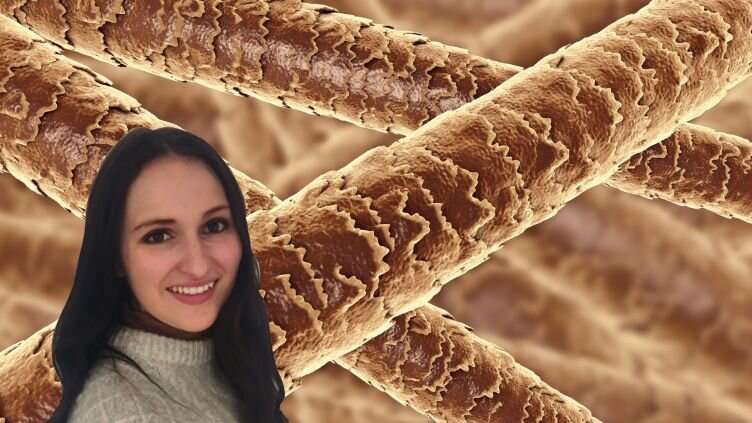This article has been reviewed according to Science X's editorial process and policies. Editors have highlighted the following attributes while ensuring the content's credibility:
fact-checked
trusted source
proofread
Investigating the nanomechanical properties of the surface layers of hair fibers

A project led by Ella Hudson, Ph.D. Researcher at The University of Sheffield, seeks to ascertain the contribution of the hair cuticle to the mechanical properties of the whole fiber.
The objective of this work was to ascertain if a novel haircare treatment could restore the nanomechanical properties of the cuticle of hair fibers following a damaging treatment and also to investigate the effect of hair type (ethnicity). To achieve this the cuticular nanomechanical properties of hair were investigated in three states, with samples of two different types of hair: African and Caucasian, which is typical for the literature in this field:
- Untreated (healthy) hair,
- Damaged hair, and
- Damaged hair treated with the novel treatment.
Under investigation was the contribution of the cuticle (surface layer) to the mechanical properties of a whole fiber. However, the techniques that are typically used to study the mechanical properties of hair generate data representative of the entire fiber (Yu et al. 2017). Nanoindentation enables the localized measurement of hardness properties of only the surface of samples
Hair fibers are hierarchically organized and consist of three basic structural units: i) a protective outer layer called the cuticle, ii) a central core called the cortex, and, in some instances, iii) a porous channel called the medulla.
The Nanoindentation data showed no significant differences between the treatment groups for either African or Caucasian hair. These results differ from whole-fiber mechanical testing which show clear treatment differences, this clearly indicates that the internal structures of hair fibers (the cortex and the medulla) respond the most to the damaging and restorative treatments, and not the cuticle.
The comparison between African and Caucasian hair types for all three treatment groups (untreated, damaged, and restored) showed that that the cuticle layer of the African hair sample had higher reduced elastic modulus and hardness values than the Caucasian sample, which demonstrates the innate cuticle differences as a function of hair type.
Previous work by Ella on the mechanical properties of hair fibers focused on the analysis of population variation and how that can change following different treatments was reinforced by the Nanoindentation data. In general, damaging treatments reduce the variation compared to untreated hair. The novel restorative haircare treatment does appear to restore this population variance towards the pre-damaged state, in agreement with the mechanical property data collected on whole-fibers.
Noticed in the data was the interesting phenomena that, following the application of the novel treatment to damaged hair, there was bimodal distribution not seen in the untreated or damaged hair groups. There is currently no definitive explanation to this, but may be due to the innate differences between individual hair fibers, for example, the presence of a medulla.
Ella intends to to continue to characterize hair in different damage states and investigate the efficacy of restorative treatments.
Provided by University of Sheffield



















